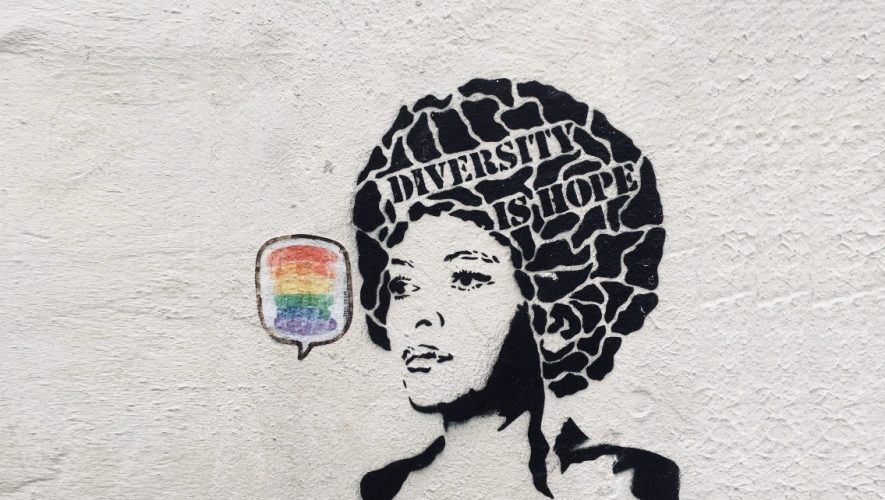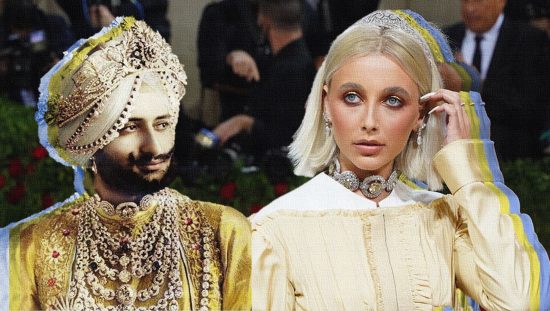The Stonewall Riots of June 1969, one of the major turning points leading to the gay liberation and modern LGBTQ+ rights movements, was a multi-night rebellion against the police. Black trans women of color, namely Marsha P. Johnson and Miss Major Griffin-Gracy, were central figures at Stonewall and in the movement it sparked. In fact, it was the Christopher Street Gay Liberation Day March on June 28, 1970 commemorating the one-year anniversary of the Stonewall Riots that inspired similar marches around the United States, eventually leading to our present-day Pride parades.
In contrast to the origins of Pride as a protest led by some of the most marginalized community members—including people of color, trans women, homeless people, and sex workers—Pride today has become increasingly corporatized. This commercialization has created problems—such as organizers’ involvement with military contractors, a focus on brands rather than community organizations, and expensive parade fees—that marginalize vulnerable community members. Increased police presence also makes some people of color feel less safe at Pride parades.
Mainstream Pride events today do not reflect the intersectionality of the community, its history, or its members. However, in the unique circumstances of 2020, Black LGBTQ+ people made sure their voices were heard and began to shift Pride back toward intersectionality.
Lawyer, civil rights advocate, and professor Kimberlé Crenshaw describes intersectionality as the “interactive effects of discrimination.” People at an intersection of marginalized identities (race, gender, class, sexuality, etc.) are affected differently by politics and systemic oppression, but are often left out of discrimination discussions that focus on “otherwise-privileged” members of any particular identity. In the LGBTQ+ community, an awareness of intersectionality means that we do not think everyone’s experiences are the same as those of White, wealthy, able-bodied, cisgender, gay men.
An awareness of intersectionality is important because it allows us to better acknowledge, understand, and ground our differences in identity and experiences. Thus, we can make space for these differences in our construction of group politics and make sure that we meet the different needs of diverse groups within our broader community. Mainstream Pride has failed to do so.
Pride’s lack of intersectionality is not new. Since 1988, there has been a separate, annual Los Angeles Black Pride due to widespread racism in Pride organizations and the gay community in general, including racist admission policies at a popular gay nightclub, negative comments about Black men’s clothing, and the reluctance of gay bars and clubs to hire Black men. Jeffrey King, a sixty-one-year-old Black organizer and founder of the In the Meantime Men’s Group said, “It was clear Pride was never for us.” When discussing his past Pride experiences, he noted getting drinks poured on him, being inappropriately touched, and having difficulty entering events and venues. Miss Major has long discussed the broader LGBTQ+ movement’s exclusion of people like her, along with the need for those directly affected to lead their own movements.
Racism within major Pride organizations and the vastly different experiences of Black LGBTQ+ people were even more apparent this year. On June 14, organizers in Los Angeles held an All Black Lives Matter march, with the goal of amplifying Black queer voices and coming together in solidarity, while also showing support for the global Black Lives Matter (BLM) demands regarding changes in policing.
While the All Black Lives Matter march drew at least thirty thousand people, the origins of the march demonstrate the ignorance of White-led LGBTQ+ organizations regarding Black queer experiences. Christopher Street West (CSW), the organization which produces the annual LA Pride parade and festival, has been frequently criticized for being too White and corporate. At the beginning of June, CSW announced the All Black Lives Matter march as a solidarity march with BLM. But Black Lives Matter Los Angeles never endorsed the event and CSW did not reach out to any other Black LGBTQ+ organizers.
CSW’s special event permit application to the Los Angeles Police Department (LAPD) further demonstrates a lack of awareness. Amid protests against police racism and brutality—including in the LAPD—CSW’s application cited “strong and unified partnership with law enforcement” and that LAPD’s “support of this peaceful gathering is key to its success.” In the end, a fairly new group, Black LGBTQ+ Activists for Change, took over organizing the march while CSW apologized and withdrew. But the actions of CSW demonstrate how far from intersectional many Pride organizations are, and how much work must be done to make Pride a meaningful experience for the entire community.
These issues are widespread in Pride organizations around the country. According to former committee chair Casey Dooley, when drafting an initial statement regarding the anti-racism protests, Boston Pride did not even consult its own Black and Latinx Pride committee. In response to Boston Pride’s lack of explicit support for BLM, committee member Athena Vaughn organized a Black-activists-led Trans Resistance Vigil and March on June 13.
While Boston Pride apologized and released a revised statement, this is a much larger, systemic issue that cannot be solved that simply. Reverend Irene Monroe, an African American lesbian activist in Boston who was at Stonewall in 1969, noted that, “Because of the tension that has gone on in Boston for fifty years . . . groups like Black Pride and Latinx Pride . . . come about [because] the larger Pride organizational committee did not consider those voices. We weren’t at the table.”
Boston Pride 4 The People is a new organization composed of former volunteer members of Boston Pride, including Casey Dooley, who recently resigned due to Boston Pride’s response to the protests. The need for comprehensive change was made clear in the new organization’s June 30 statement calling for the resignation of Boston Pride’s entire board.
Despite such long-term, systemic issues in Pride organizations around the country, this year seemed to be a turning point. Pride started to look different as soon as major cities began canceling parades due to COVID-19. San Francisco Pride canceled their parade on April 14, New York City Mayor Bill de Blasio canceled NYC Pride on April 20, and CSW postponed LA Pride before officially canceling it on May 7. By the end of April, organizers had canceled or postponed about 280 Pride events globally.
However, the country experienced a seismic shift after the killing of George Floyd by Minnesota police on May 25 and the start of nationwide BLM protests. Pride also shifted in tone. At the LA All Black Lives Matter march, Black lesbian protestor Eyvonne Leach discussed the role of the pandemic in attracting major national attention to Floyd’s death by forcing us to “put [our] lives on pause.” The country could no longer ignore racism and the harm it has caused, especially in the past few months. People began paying more attention to the importance of intersectionality in the Pride and BLM movements after the killings of Nina Pop (a Black trans woman) in early May, Tony McDade (a Black trans man) on May 27, Dominique “Rem’mie” Fells (a Black trans woman) on June 8, and Riah Milton (a Black trans woman) on June 9.
Though trans women of color have been integral to the LGBTQ+ rights and BLM movements since their beginnings, they have never shared fully in the gains of either one. Transgender women of color, particularly Black trans women, are disproportionately killed. But during an intersection of LGBTQ+ activism and BLM in a time of extraordinary circumstances, Black LGBTQ+ people made sure their voices were, and will continue to be, heard.
In addition to the LA All Black Lives Matter March, the June 14 Brooklyn Liberation March drew fifteen thousand people to the area surrounding the Brooklyn Museum. It was a rally and silent march meant to evoke the NAACP’s 1917 Silent Parade, at which ten thousand people wearing white demanded an end to violence against Black people. The overarching mission of Brooklyn Liberation was to bring Black transgender and gender-nonconforming people into the global conversation about Black lives.
In one of the few concrete wins over the past few months, the Supreme Court ruled on June 15 that the Civil Rights Act of 1964 protects LGBTQ+ people from workplace discrimination. However, in her speech at Brooklyn Liberation, Black trans activist Raquel Willis pointed out a glaring disparity: “. . . yes, the legislation matters, but White queer folk get to worry about legislation while Black queer folk [worry] about our lives.” This statement explicitly demonstrates the need to examine, critique, and improve Pride through an intersectional lens.
Organizers held smaller marches similarly focusing on Black LGBTQ+ people and their experiences around the country. Thousands joined the Boston Trans Resistance Vigil and March organized by Athena Vaughn on June 13. In Washington, DC, members of the LGBTQ+ community and BLM marched toward the White House and the mayor’s house. Marches in Denver and Chicago also drew hundreds and thousands of people, respectively, on June 14.
This year, as Athena Vaughn discussed, Black trans people decided to “fight for [themselves] and to remind people what Pride was all about,” returning to the idea of Pride as a “resilience and a resistance.” In New York City, the Reclaim Pride Coalition is doing similar work. It hosted its first Queer Liberation March in June 2019 to contrast with New York’s commercial World Pride. Last year, the goal of the march was to honor the history and legacy of queer liberation struggles, continue to resist oppression, and celebrate the gains that have been made through queer resistance.
This year’s march was originally cancelled due to COVID-19, but protests against police brutality reminded the organizers why the Queer Liberation March was created and why fighting for justice is necessary even during a pandemic. Thus, Reclaim Pride organized a march on June 28, renaming it the “Queer Liberation March for Black Lives and Against Police Brutality.” Showing a larger community commitment to focus on and listen to marginalized voices, the march drew thousands of demonstrators. This was in great contrast to the more symbolic gesture of NYC Pride’s procession on the same day.
Francesca Barjon, one of the march’s organizers, stated, “We did this march to center Black and brown trans people . . . We need to listen to Black people, Black trans people, and Black LGBTQ people who have been speaking up for decades and haven’t been listened to.” Due to this decades-long lack of attention, some LGBTQ+ people of color, people who have worked for years to address the intersection of racial and gender injustice, thought others would never care.
But protestors made this year’s Pride different. Black LGBTQ+ people spoke loud and clear this year, and now, as Raquel Willis remarked at Brooklyn Liberation, “If you have an organization that has no Black trans leadership, if you have an organization that has no specific Black trans programing or funding, you are obsolete.” The larger Pride organizations like CSW, Boston Pride, and NYC Pride have a very long way to go and a lot of changes to make; the work and efforts of LGBTQ+ people this year demonstrated that Pride can and must be better.
Though the prospect of Pride parades in the post-pandemic world is exciting, the LGBTQ+ community must continue what its Black members made sure was a focal point this year: awareness of intersectionality and centering the voices of the most marginalized. And we must pressure large Pride organizations to be more aware of the diverse identities and experiences within our community, while supporting smaller Pride organizations like the Reclaim Pride Coalition that work to make Pride better.
An organizer of Brooklyn Liberation noted that this year, people are finally listening and the fight is picking up steam. This year, Pride brought a long-overdue focus on intersectionality and listening to Black LGBTQ+ people. But to ensure Pride actually becomes intersectional and meaningful for everyone, this kind of organizing must continue in the long-term—we simply cannot go back to “normal” Pride when the pandemic is over.



